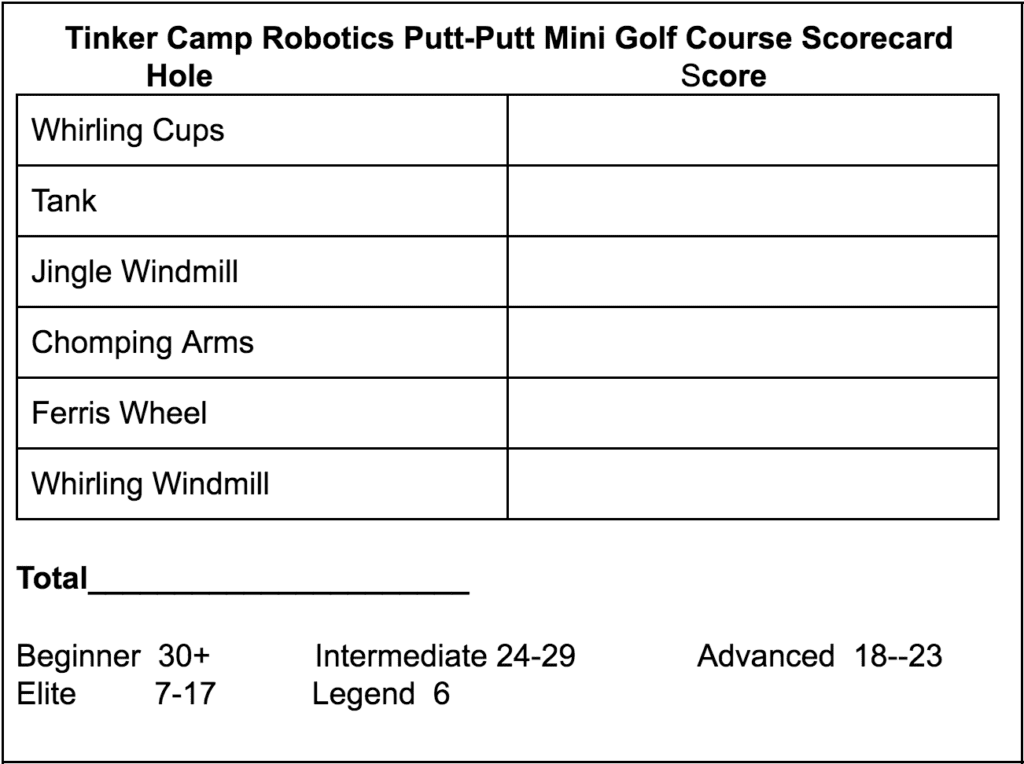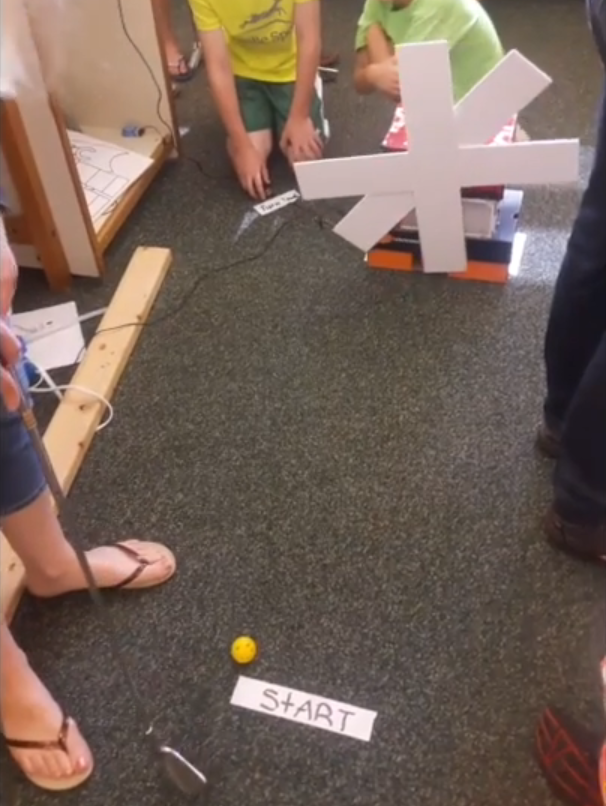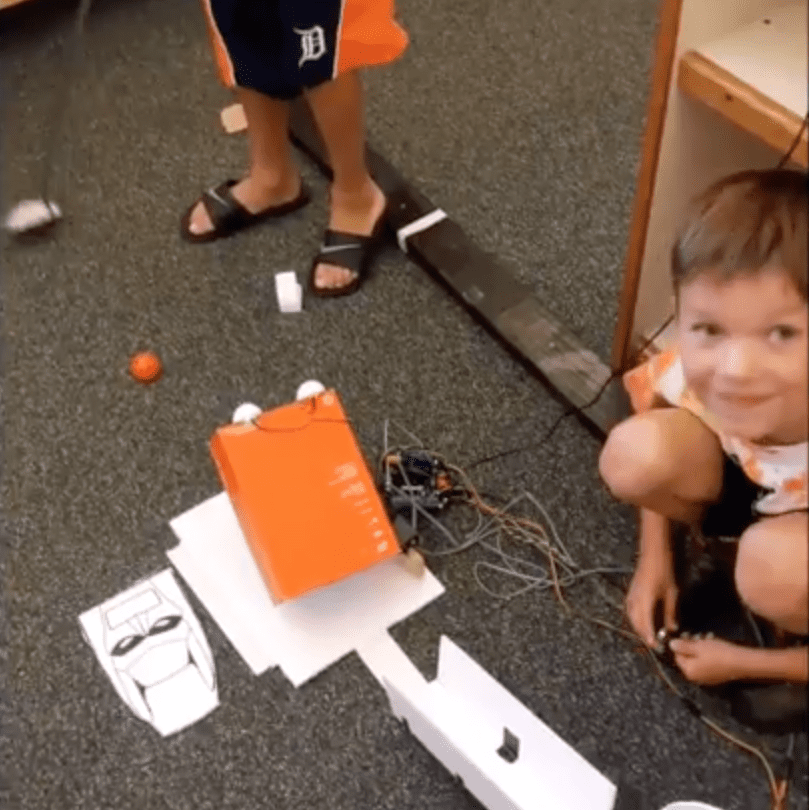Register to receive free access to all teacher materials.
Created By
Mike Jacobs and Stephanie Sytsema of Grandville Christian Elementary School
Programming Language
Any language supported by Hummingbird Duo
Grades
4-5, 6-8
Objective & Learning Goals
- Students write programs using the Hummingbird motors, lights, and sensors.
- Students use Hummingbird components to design and build a hole in a miniature golf course.
- Students work methodically to solve problems that occur as they create their robot.
Standards
COMPUTER SCIENCE TEACHERS’ ASSOCIATION (CSTA)
CSTA Standards are split into different grade levels: 3-5, 6-8, and 9-10. Working with the Hummingbird Robotics Kit meets multiple standards across these grade-level delegations.
Visit this page for a more detailed explanation of how working with the Hummingbird Robotics Kit applies to meeting CSTA Standards.
Photo Gallery
In July 2017, Mike Jacobs and Stephanie Sytsema hosted a Hummingbird summer camp at Grandville Christian Elementary School. This project grew out of a weekly Tinker Tuesday program in which high school engineering students facilitate STEM activities with elementary students. Students and parents were hungry for more, so Jacobs and Sytsema created a week-long camp that was offered twice during the summer of 2017. In this camp, students used the Hummingbird to create a miniature golf course, complete with windmills and moving obstacles. On the last day, students’ families were invited to come and play this very challenging course! The proceeds from the first week of camp were used to cover the costs of the Hummingbirds, which are now available for future camps and classes in the elementary school.
Program Outline
- Day 1: Students are introduced to the Hummingbird and learn to write programs with the lights and motors.
- Day 2: Students learn to use sensors to make decisions in their programs.
- Day 3: Students jump into designing their robotic creations for the miniature golf course! Students are required to draw their designs and annotate their drawings before beginning to build. Teachers emphasize how to troubleshoot and solve problems step-by-step as they are building and programming.
- Day 4: Students work to complete their robots in preparation for the open house on Day 5.
- Day 5: After students set up the golf course, family members are invited to come and play. This event is BYOP–Bring Your Own Putter!



